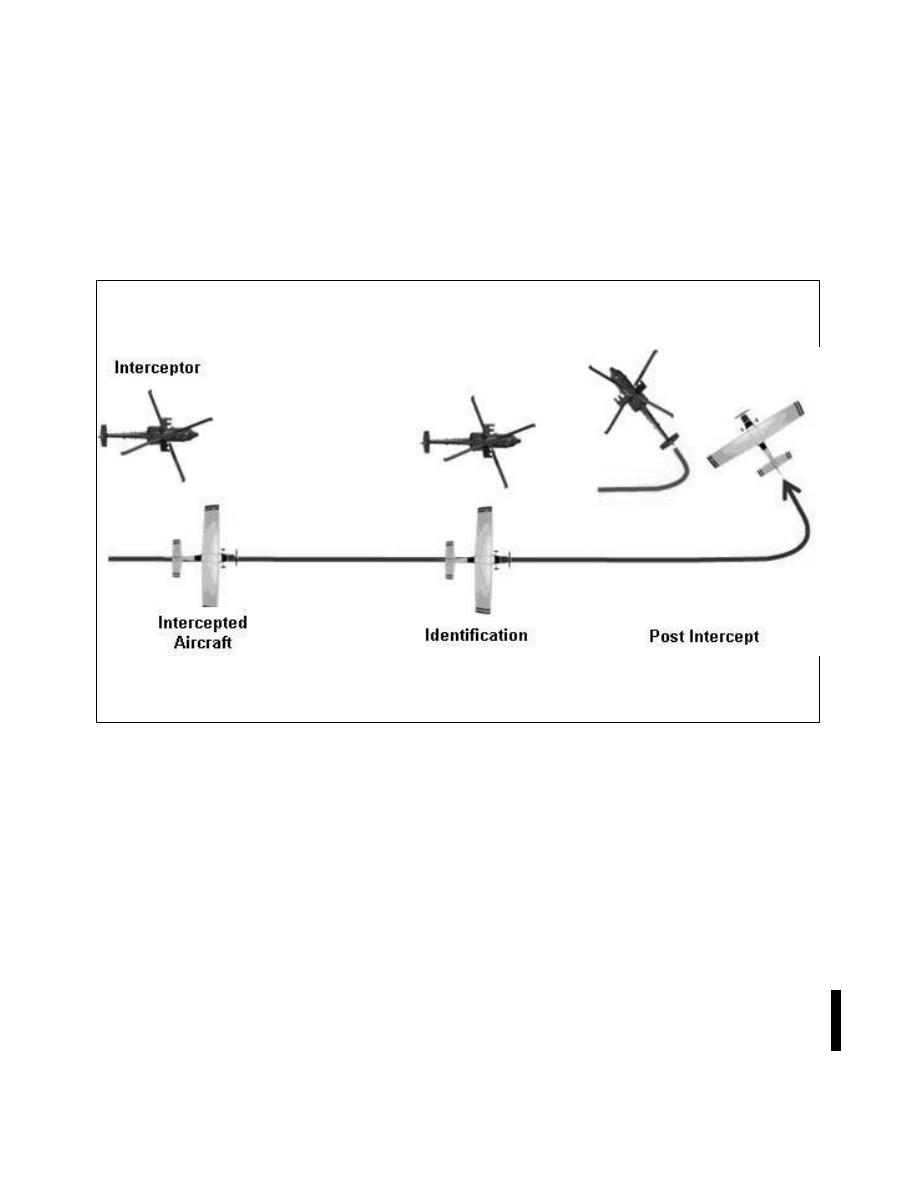
4/20/23
AIM
1) may be employed. In order to maintain safe aircraft separation, it is incumbent
upon the pilot of the intercepted aircraft not to fall into a trail position (directly behind the helicopter) if instructed
to follow the helicopter. This is because the helicopter pilot may lose visual contact with the intercepted aircraft.
NOTE
−
Intercepted aircraft must not follow directly behind the helicopter thereby allowing the helicopter pilot to maintain visual
contact with the intercepted aircraft and ensuring safe separation is maintained.
FIG 5
−
6
−
2
Helicopter Intercept Procedures
d.
Summary of Intercepted Aircraft Actions. An intercepted aircraft must, without delay:
1.
Adhere to instructions relayed through the use of visual devices, visual signals, and radio
communications from the intercepting aircraft.
2.
Attempt to establish radio communications with the intercepting aircraft or with the appropriate air traffic
control facility by making a general call on guard frequencies (121.5 or 243.0 MHz), giving the identity, position,
and nature of the flight.
3.
If transponder equipped, select Mode 3/A Code 7700 unless otherwise instructed by air traffic control.
NOTE
−
If instruction received from any agency conflicts with that given by the intercepting aircraft through visual or radio
communications, the intercepted aircraft must seek immediate clarification.
4.
The crew of the intercepted aircraft must continue to comply with interceptor aircraft signals and
instructions until positively released.
5
−
6
−
14. Interception Signals
2.
National Security and Interception Procedures
5
−
6
−
11